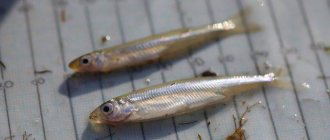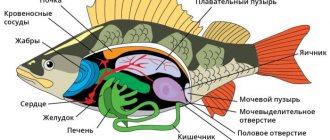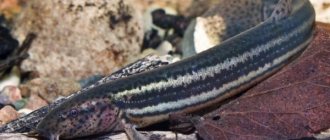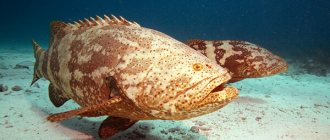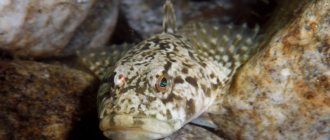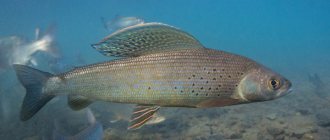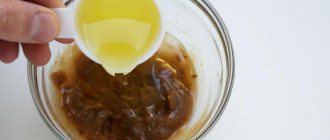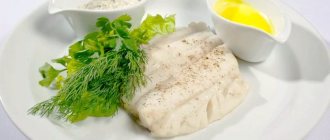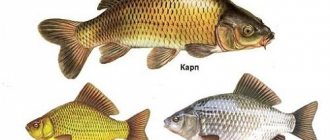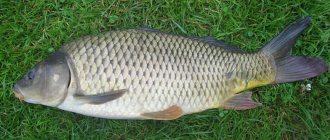Carp
, in terms of its size and significance for fishermen and fisher-hunters, undoubtedly ranks first among all the fish of its family, which received its name from it. But in terms of fishing, despite the fact that in Southern Russia and especially in the lower reaches of large rivers of the Black, Caspian and Aral Seas, carp is caught in huge quantities, it does not have the same importance as, for example, bream, syrt, ram and roach, and it is still almost never stored anywhere for future use.
Description
Carp Carp is a cultivated form of carp.
There are several forms of carp: naked, mirror and scaly. Fishermen usually come across wild carp, which somehow got into the reservoir from fish farms. Spawning coincides with the end of flowering of gardens and the opening of the swimming season and occurs in shallow grassy areas. Carp feeds on various aquatic organisms and larvae, as well as all kinds of plant foods. Begins to feed from the time of cherry blossoms. However, in a number of reservoirs, its fishing begins only after spawning. There are reservoirs rich in food, where he generally does not pay attention to the most seemingly tasty baits. In spring and early summer, carp prefer a worm or half a crawler. After spawning, it bites better on cereal grains, potatoes and dough. Real river carp, or carp, is very beautiful. It is covered with unusually large dark yellow-golden scales, which are darker on the back, with a bluish tint, and lighter on the belly; It seems as if the golden field is strewn with carnations with dark caps. At first glance, carp, especially young ones, have a fairly strong resemblance to crucian carp, but it is not so high in the back (the height of the body is only twice as thick), thicker and longer, and immediately differs from the latter with its 4 thick and short antennae on yellow, unusually fleshy lips, almost as mobile as those of bream; These antennae sit in pairs on each side and end in roundish, flat heads. The dorsal fin is very wide, wider than that of other cyprinids, and occupies almost the entire back half of the back, dark gray in color. In addition to its width, it is distinguished by a very strong sawtooth, jagged front ray. The dorsal fin of the barbel myron has such a ray, but in carp the anterior ray of the anal fin has the same structure. All lower fins are grayish-violet, the caudal fins are red-brown; golden eyes. The pharyngeal teeth, lying in the pharynx, found in all carp fish and used for grinding solid food, are distinguished by their massiveness; There are five of them on each side, arranged in two rows. Young carp, 2-3 years of age, are much flatter, wider, humpbacked and lighter than adults, which is why they are sometimes called lapys and croakers. Large carps have an almost cylindrical body.
But both in color and body composition, carp, this widely distributed and even, one might say, domesticated fish, is subject to numerous and strong modifications. On the one hand, there are varieties with a very elongated, almost cylindrical body, on the other hand, there are carp whose body shape is similar to silver crucian carp. The latter seem to be increasingly found in ponds and generally in small enclosed pools, while oblong carp are more often found in estuaries, in the sea or in large lakes.
Naked (leatherback) carp
Naked (Leatherback) Carp
If you look closely at the picture of a naked carp, you will see a number of scales. Naked carp may have a certain number of scales, but the fundamental difference is either the complete absence of the dorsal row of scales, or its discontinuity. And from the head to the beginning of the dorsal fin there are no scales.
The growth rate of naked carp compared to scaly and mirror carp is much lower, which is determined by a much smaller number of blood cells. And accordingly, this means that this species needs water with a high oxygen content.
Naked carp are not as strong as their fellow species, they have fewer dorsal vertebrae and may differ in deformation of their fins.
Article on the topic: Fishing for carp and crucian carp
Spreading
Thanks to breeding, carp is widespread in many reservoirs in Russia and abroad.
The distribution of carp in Asia Minor and Persia has not yet been studied, but it is found in huge numbers in the Aral Sea, in the Syr Darya and Amu Darya; There are no carp in Siberian rivers.
Carp distribution
Carp lives in ponds, lakes, oxbow lakes, quarries, stakes, and reservoirs. Carp prefers water bodies overgrown with aquatic vegetation with a slightly silted or hard, but not rocky bottom. Mainly stays at depth.
Types of carp with photos
In addition to the common carp, which is considered the most hardy representative of this large family, other cultivated species bred artificially are also found in fish farms, lakes and reservoirs.
Mirror carp
This type of carp is considered the result of successful breeding work aimed at increasing the fertility and weight of the fish. The mirror carp first appeared in Germany at the beginning of the 19th century under the same name. This type of carp differs from the original species in the presence of larger fins with fewer bony rays, as well as faster weight gain and the shape of the scales on the body. As a rule, mirror carp scales cover only part of the body, in the form of rounded mirrors. Depending on the location of the scales on the body of the fish, there are several types of mirror carp - framed, scattered and linear. Due to the fact that mirror carps have a strict attachment to the food base, consisting of shellfish and cereals, this factor significantly simplifies the process of keeping fish in artificial reservoirs.
naked carp
Naked carp appeared as a result of further work by breeders on mirror carp. The main difference between the species is the complete absence of protective cover in the form of scales. It has another name - leather carp. In this case, a minimum number of large scales is allowed in the back area, as well as at the base of the caudal fin.
Interesting to know!
Naked carp have a rather weak immune system and are susceptible to infection by various parasites. Due to this fact, the species is not of great economic importance, but is bred for recreational and sport fishing.
Carp
As a result of severe food competition between the two species, it was necessary to control the number of super-prolific crucian carp in order to prevent the predominance of small numbers.
Having set this goal, in the 1980s a special breed was bred in Russia - carp, which was distinguished by unique characteristics: rapid weight gain, high nutritional value and inability to reproduce. In addition, the hybrid has other features: the head and color correspond to crucian carp, and the body corresponds to carp. Thanks to its unique characteristics, in just a couple of years of life, the fish gains weight of almost 2 kg.
Koi carp
Back in the 1st and 2nd centuries, the Chinese were engaged in crossing closely related generic taxa. As a result, it was possible to obtain unique offspring from wild carp and local crucian carp. This offspring is still known to all aquarists, as they called the decorative species “goldfish”. This hybrid represents the body of a carp and has retained the ability to reproduce independently. Moreover, its body color is either white or red. Further crossbreeding work resulted in pink and spotted varieties.
Interesting fact!
This fish, bred in China, quickly found its way to Japan, where it became widespread among rice farmers far from easily accessible areas. Weather conditions cut people off from civilization for a long time, leading them to protein starvation. And then this problem was solved thanks to this unpretentious fish, which was kept in special water tanks intended for watering rice fields.
The word "koi" means "carp" in Japanese and is used to describe this unique taxon, which is capable of growing up to 1 meter in length. The Japanese also use another term “nishikigoi”, which means “brocade carp”. At least 80 breeds of this carp have been bred, and mirror carp also took part in this. These species are now kept in homestead or carp ponds in various parts of Japan. As a rule, this is done for the purpose of cultural and aesthetic pleasure.
Siamese carp
The Siamese carp, also called the giant barbel, is considered the most numerous representative of this family. This fish prefers to lead a peaceful way of life, feeding mainly on phytoplankton, algae, plants, cereals and fruits. Despite this “diet”, some individuals grow to impressive sizes, gaining weight of about 50 kg, or even more. There is evidence that fishermen have come across specimens weighing up to 300 kg and up to 3 meters long.
Age and size
Carp grows very quickly. By the end of the first year of life, its length is already about 10 cm with a weight of 25-30 g. In favorable conditions, by the end of the second year it weighs 450-500 g, and in the third year (puberty sets in) its weight reaches 2 kg. The size of an adult carp can be 100-120 cm in length and weigh 20-25 kg or more. The usual length is 50-70 cm with a weight of 4-6 kg. Lives up to 30 years. historical facts are known about caught carp weighing up to 70 kg and measuring up to 1.5 meters. River and sea carps of South-Eastern Europe, including Caspian carp, reached this weight and size. There is also reliable information about pond carp that have reached not only a century, but even two hundred years of age.
Typically, the length of an adult carp is from 30-50 cm to 1 m and the weight is up to 15-25 kg, rarely the length is up to 1.5 m and the weight is up to 35 kg. The body of the carp is thick, moderately elongated, laterally compressed, covered with large scales. The head is large, the mouth is lower, the lips are well developed. The upper lip has two pairs of well-developed short whiskers. The dorsal fin is long with a small notch, the anal fin is short, and the caudal fin is deeply notched. The dorsal and anal fins each have a serrated spiny ray (saw). The sides are golden light, the back is darkish, the fins, except the dorsal, are reddish. Color may vary depending on habitat.
Reproduction
Carp spawns quite late, when the water begins to warm up to at least +18 degrees. As a rule, this is the end of May or the beginning of June, which indicates that this fish is thermophilic. Individuals become sexually mature at the age of 3 to 5 years. When females are ready to spawn, they are accompanied by several males of the same age. They go to shallow water, up to half a meter deep, overgrown with aquatic vegetation. Egg throwing takes place over 2-4 days, with the eggs being deposited in separate portions. In general, a female, depending on her age, is capable of laying from 0.2 to 1 million eggs. After a maximum of 6 days, fish fry emerge from the eggs. After birth, they continue to feed on nutrients stored in the yolk sac for some time. As soon as the fry gets stronger, it goes into free swimming and begins to feed on zooplankton.
Lifestyle
Carp prefer quiet and deep places overgrown with pondweed, water lilies, reeds and cattails.
In rivers it prefers areas with calm currents, lives on reaches, bays and oxbow lakes with well-developed aquatic vegetation. Leads a gregarious lifestyle and does not migrate far. In autumn, as the water temperature drops, it moves to deeper places, where it spends the winter in a sedentary state. Prefers silt or clay soil. At night, in search of food, carp enter small creeks and backwaters overgrown with grasses. Carp can be found along steep banks, near the riverbed, and if the river is not wide, then in the riverbed itself, on a weak current near a clayey or silty-clayey bottom. In lakes, the favorite habitats of carp are underwater hills, saddles between the depths, the boundaries of shallows, capes above bays and backwaters, deep channels with reverse flow, uneven areas of the bottom with large stones - all these are ways for carp to exit and return to the site. Carp is a heat-loving, schooling and sociable fish. In the same flock there are carps of different ages, sizes and weights - from 1-1.5 kg to 8 kg or more. But the largest carp live separately from the smaller ones. At dawn, the carp noisily throws itself up out of the water and with a splash falls back flat. In lakes and reservoirs, it sticks to the deepest places, not far from shores overgrown with algae; it is especially attracted to islands with a wide strip of algae, where the fish go to feed. In rivers, carp stick to quiet, deep holes in slow currents, especially if the banks of the holes are steep and washed away. They often occupy deep bays and oxbow lakes.
Sexual maturity of carp occurs at the age of 3 years. A female carp lays an average of 200 thousand eggs or more. Spawning occurs when the water temperature is not lower than 18 degrees, usually in the second half of May, early June. For spawning, shallow water with a large amount of aquatic vegetation and a depth of 40-50 cm is chosen. The carp spawns for several days, first small individuals, then medium-sized ones, and at the very end large ones. The caviar is yellowish in color. The eggs are sticky and stick to vegetation. Spawning is gregarious and noisy.
Carp habitats
You can meet carp in freshwater rivers
and
lakes
, as well as in
reservoirs
with low salinity.
Carp lives mainly in stagnant bodies of water, or rivers with a calm current, the bottom of which is muddy. During the freeze-up period, carp go into deep holes, where they spend the entire winter. During this period, the carp's body is covered with a thick layer of protective mucus, it stops feeding and practically does not move. During the spring melting of the ice, the carp comes to shallow flooded areas of land, where the depth does not exceed 1.5–2 meters, where it remains until the moment of spawning.
Carp fishing
Carp are caught with a float rod. The rod must be powerful, even if it is equipped with a reel. The line is usually 0.5 mm with a leader of 0.4 mm. It is clear that the thickness of the fishing line depends on the size of the carp found in the reservoir. For catching carp weighing 1.5–2 kg, a leash thickness of 0.3 mm is sufficient, but for giants weighing 10 kg, a fishing line 0.7 mm thick may be weak, especially for blind tackle. When catching large carp, you need a thick leash (vein leash is unsuitable due to its rigidity) made of silk or nylon, preferably wicker. Camouflage of gear for carp fishing is absolutely necessary, just like camouflage of the fisherman. Sometimes long-distance casting of bait with a sliding float or using a spinning reel helps. Coastal thickets or wicker camouflage shields, which can also be installed on a boat, camouflage the fisherman well.
Reel tackle is very helpful both in long-distance casting and when retrieving, and allows you to use much thinner, invisible line. The sizes of hooks are selected according to the bait, but double-strength hooks are required. By the way, carp have a rather big mouth. You can use hooks ranging from No. 6 to 12, depending on the size of the fish. Carp fishing almost always occurs in algae thickets and from the bottom, so the line and leash are painted gray-green to resemble algae. For successful fishing, it is very important to choose the right fishing location.
At dawn, the carp noisily throws itself up out of the water and with a splash falls back flat. In lakes and reservoirs, it sticks to the deepest places, not far from shores overgrown with algae; it is especially attracted to islands with a wide strip of algae, where the fish go to feed. In rivers, carp stick to quiet, deep holes in slow currents, especially if the banks of the holes are steep and washed away. They often occupy deep bays and oxbow lakes. They are caught not in the pit itself where they live, but on the paths along which carp move to feed. If it was possible to determine their parking place based on the skids, then you need to try to determine which way they will go to the algae thickets to feed. You need a flat area, clear of snags and rubbish, at least 5–6 m long and at least 4–5 m wide, with a depth of no more than 3 m, at a distance of up to 20 m from the parking lot.
On the shore, near the fishing site, sizha is prepared, which is camouflaged if possible. To regularly fish such places, you need to select three or four. Carp feed along and near the shore, not missing the shallows near the riverbed along the way. The bait must lie on the bottom, and the sinker must barely touch it or be 1–2 cm from the bottom. It is very important. It will be easier to notice the fish touching the bait and prepare for hooking in a timely manner. The carp bite is sometimes so fast that the rod ends up jerking into the water. But more often, in the hot season of summer, he carefully takes bait, especially vegetable baits, slightly moving the float, slightly lifting it. Then, if the fish liked the bait, the float, slowly sinking, will go under water. This cutting moment should not be missed. When fishing with grain baits, you need to hook when the float is rising, but if you hook too early, the carp can easily break loose and lead the whole flock away from you. Determining and describing the moment of timely hooking for each bait is difficult, sometimes impossible. This comes with practice.
Masking should be maximum. The fisherman's suit, especially above the waist, should blend into the background of the shore. Walking along the shore is completely unacceptable. The ends of the rods should not protrude beyond the shore line more than 1 m. Even on permanent and already proven feeding routes, carp must be fed. This keeps the flock in the right place, sometimes for the entire dawn, since the flock, slightly frightened by the landing of one, returns to feeding again. Complementary food, like bait, should contain steamed cake. Cereals and potatoes must be cooked with cake.
Fishing for carp After spawning, in mid-summer, carp feed from dusk until dawn, sometimes until 8–9 o’clock. In shaded areas, the bite occurs until almost noon. At the beginning and end of summer, on cool days, carp take better in the morning after heating, when the dew begins to dry. You should not check and re-throw the tackle often and unnecessarily - this scares away the fish. The carp hook should be sharp, but short, especially if the cast was not long. You just need to pierce the fleshy mouth of the fish. Fighting carp requires resourcefulness and endurance. The main condition for success is to counter all the jerks of the fish with a well-tensioned line and pull the fish onto the landing net at the slightest opportunity. When the line weakens, the carp can wrap it around itself and tear it with the sharp teeth of the first ray of the dorsal fin.
In recent years, in reservoirs such as lakes and reservoirs, bottom fishing rods have begun to be successfully used for carp fishing. This fishing has a number of features: long casts are not needed, 8–12 m is enough, it is better if the angler is located 5–7 m behind the coastline, which camouflages him. A carp fishing rod should be at least 1.2 m long; spinning one-handed rods are good. The rod is supported by a powerful fork to counteract the sudden jerk of the fish; signaling devices should be light in weight and as sensitive as possible. Semaphore type signaling devices are especially good. Carp acutely senses weather changes, sometimes stops feeding 2 days before the onset of such a change. The bite also weakens in variable, unstable weather. However, the carp's jumps always show that it is getting ready to feed, but sometimes it bites even without playing. At a feeding site, carp can be identified by bubbles rising from the bottom to the surface as they rummage through the mud, looking for food.
Catching carp requires a lot of patience and composure. Those who are not sufficiently endowed with them are better off catching other fish. But catching large fish often brings unforgettable moments to a skillful and patient fisherman. To catch especially large carp, the fishing rod is specially equipped with: a leash made of nylon or silk cord with a diameter of 0.8 and a length of 8 cm; steel leash with a diameter of 0.3 mm, a length of 30 cm from three elbows; a core of line with a diameter of 0.7 mm and, finally, a reel capable of holding at least 60 m of this line. A steel leash after a soft one is necessary so that the carp does not break the line with the teeth of its fin. Only an end sinker is placed on the bottom fishing rod; sliding ones are unsuitable - they do not transmit the bite well when immersed in silt.
In autumn, with the coloring of the leaves and the beginning of the mass digging of potatoes, carp feed in the afternoon and evening. In cloudy but warm weather - all day, but better in the morning and evening. With the beginning of cold mornings, the carp goes to the most remote and deep holes and stops feeding. The exception is stray carp, which have just been lost from fish farms during the release and fishing of ponds. Once in a new body of water, stray carp look for a place to winter and continue to feed almost until freeze-up, which depends on the availability of nearby places suitable for wintering. In winter, from under the ice, in deep holes and near reservoir dams, large carp are occasionally caught using a brass spoon while trolling perch. In general, they lie down for the winter and become numb when ice appears.
What does carp eat?
Carp is considered an unpretentious and fairly omnivorous fish. Since the carp's mouth has a special design, the fish easily filters the bottom soil, releasing nutritional components. Thanks to this mouth design, the fish mainly feeds from the bottom. That is why the bottom method of carp fishing predominates. The pharyngeal teeth of carp are quite sharp, and the dense and wide lips are adapted for grinding fairly hard food objects. The basis of the carp diet includes:
- Larvae, worms, small crustaceans.
- Insects, molluscs and tadpoles.
- Caviar of other fish species.
- Aquatic vegetation, vegetables and cereals.
- Leeches and detritus.
The favorite foods of carp are molting crayfish and pearl barley. In places where carp live, you can hear a characteristic crunch, which indicates that the fish is crushing shells. This often misleads inexperienced fishermen. Large specimens can swallow a gaping fry, but carps do not specifically hunt them. This fish has excellent hearing, which allows it to hear a bloodworm swarming in the ground or an insect falling into the water from a distance of tens of meters.
Nutritional value of carp
Despite the fact that carp meat is quite bony, it is also quite tasty. In addition, it contains polyunsaturated fatty acids Omega-3 and Omega-6. There are only 115 kcal per 100 grams of meat, which makes it indispensable for dietary nutrition. If you fry fish, its energy value increases by 2 times, which those who watch their figure should know about. For those who want to get rid of extra pounds, it is better to eat boiled fish, stewed or baked in the oven. The meat of this fish contains all the necessary nutrients that are so necessary for the normal functioning of the human body.
Regular consumption of fish dishes helps strengthen bone tissue, normalize mental activity and the functions of the cardiovascular system. At the same time, the aging process slows down and the immune system is strengthened.
The difficult fate of the wise carp
Often, when reading fishing literature about carp and carp, you come across the epithets “cunning”, “wise”, “fox” and the like. Indeed, this fish is very smart and cunning, sometimes it can outwit the most experienced fisherman! L.P. Sabaneev also repeatedly mentioned the cunning nature of this fish. But, despite all this, his fate in our area is difficult!
I really love watching our aquatic inhabitants. Carp is no exception. I remember a time when I was able to witness their walks in all their glory. Specimens from 2 to 6 kilograms walked along a wide river blocked by a dam. They, in fact, concentrated at this dam. They moved in pairs of the same size, and in pairs. If it weren't for the end of August, I would have thought that they were going to spawn. But no!
It is in these places that on a hot summer day you can always see these handsome men, imposingly strolling near the surface, as if they were demonstrating to everyone their impunity. Indeed, given the size of these beauties and their habitat (namely, the enormous depth and just a forest of flooded trees and bushes), all that remains is to watch and drool). Okay, a little distracted from the topic, let's start.
There are 3 ponds in our small village, two of them are rich in crucian carp and the now ubiquitous rotan. I already wrote about one of them, namely the smallest one, in the article “A nod in the heat.” But the largest and deepest has a rather long history. About two centuries ago, on its shore stood the estate of the master G. Pereverzev (in his honor, by the way, our village “Pereverzevo” was named), and at that time the pond flourished. Its waters were home to a wide variety of fish species, but it was especially famous for its carp. And this was especially pronounced, since at that time this fish was almost never found in that area.
Fishermen have been coming from all regions for many, many years. BUT, nothing lasts forever! Somewhere in the late 70s, carp were poisoned almost entirely by the various chemicals that were used to treat the fields at that time. Its population was finally “killed” when, almost 10 years later, the pond was completely drained.
From that moment on, the three of us (me, brother and father) decided to somehow revive it. We drove around the ponds, caught small carp and that was our goal. Finally we found a small pond, which at that time contained an abundance of carp of all sizes. My father was focused on large-caliber ones, while my brother and I caught small carp.
So, after two summer seasons, we introduced a fair number of fry into our pond. But, bad luck, the carp could not spawn, because... the filthy “electric rods” left their mark there too! Time passed, the carp grew, and there were often cases of fishing line breaking, but no one could catch it, only poachers sometimes caught large fish in nets. Along with a bad pedigree, namely the inability to reproduce, the carp inherited all the cunning and caution that was apparently inherited from its ancestors.
Sometimes you walk along the shore and see respectable specimens tossing and turning in the coastal grass. You quickly turn around and run home to get your fishing rods. But it was not there! As soon as you creep up to the shore, he quickly retreats under the other bank, on the contrary, and there he begins his carousel. Many morning and evening dawns were wasted, and the carp was always so close, but at the same time so far away.
But, lo and behold! Carp gather in pairs! So, we finally waited for the spawn. And indeed on this day his spawning was amazing. I was on duty at the pond all day so that no one would interfere with this process. It is worth noting that at that time there was a decent size crucian carp on the pond, but despite this, all the village fishermen went home so as not to suddenly scare away these “sweet couples”. And that means something.
A year passed and half-kilogram carp began to be caught in the catches. How beautiful they were! Thoroughbred: wide, with dark bronze sides, simply magnificent! And, most importantly, so long-awaited! 4-5 years have passed since then, but we managed to catch it only last June. One day, after taking five days off from work, I came to my home village. That evening my father and I went to the pond. What was he doing there! The whole “tail” was literally wobbling. Every now and then, carps of various sizes made themselves felt in solid waves of various sizes.
That evening we didn’t catch anything, because... everything was hasty and hectic. The next day we prepared thoroughly: We took “Leningrad” aluminum spinning rods with us, tied thick (0.45 mm) fishing line, meter-long braided leashes and powerful “Mustad” hooks to them. It was decided to throw it under the shore, into the windows between the aquatic vegetation. Knowing the cunning and timid nature of our pupils, we sat down at a distance from the fishing spot, behind the bushes.
Well, we’re spread out and waiting. The carp is actively moving throughout the “tail”, we wait and enjoy the coolness of the June evening. The sun has set below the horizon, it is getting dark, and suddenly the silence is cut by the crackling sound of a Neva coil. Got it! Without thinking about the cold, I climb into the water. The carp had already managed to wrap a decent amount of grass on the fishing line and go under the neighboring bank.
Father stands with a landing net at the ready, but you can’t take it near the shore, in such grass. I take the landing net in my other hand and begin to fight. The process lasted about 20 minutes, but still the fish began to slowly give up and now it was already at my feet. Somehow I contrived and brought a landing net under his head, on which there was already a fair amount of grass. HERE HE IS! The long-awaited handsome man! It’s almost dark, and we’ve made quite a bit of noise; it’s time to go home. We can assume that we have completed our plan for today! We weighed it at home and it turned out to be 3.5 kg. It should be noted that he behaved like a very worthy fighter.
The next day we arrived a little earlier, around four o’clock in the afternoon (I would like to note that carp absolutely do not take it in the morning!), spread out, and sat in the same places. After waiting a little, I decided to move, on the contrary, to the neighboring shore. I settled comfortably between the willow bushes and waited, contemplating the beautiful sunset. Time was already drawing to a close when, on the neighboring shore, at my father’s, the spinning rod “crackled.” This time the fish went along the shore and did not manage to get far. After 10-15 minutes, the five-kilogram handsome man was brought into the landing net. Lots of emotions! Well, now we can consider our short vacation 90% successful, but there’s still one more day!
The next day, my father and I decided to switch coasts. And so they did. Again they scattered the spinning rods according to the usual pattern: through the windows, having previously camouflaged them in the coastal bushes. This time we decided to change the hooks to lighter ones, because... the fish is very careful. This was our mistake! After a bite followed in the twilight, it became clear that this time the specimen was more serious than the previous two.
He took it almost at the very tail and therefore, without giving us time to come to our senses, he immediately walked along the shore, having already wound a fair amount of grass on the fishing line. The father climbed into the water, simultaneously throwing grass off the fishing line. For about 15 minutes the fight continued with this bodybuilder, who did not want to approach the fisherman, but now he was already nearby, but still under a huge layer of grass.
Then suddenly a fishing line flies out of the water... ten seconds of stupor, silence, that’s it, a cliff! I got caught on a saw, no less! He couldn’t just break the braided leash, but what was it? The hook is broken! What an ambush! Because of such stupidity and such a mistake! There was a lot of talk on this topic later, but after a fight, as they say, you don’t wave your fists! Well okay, that means you deserve it, well done!
In such situations, one can only be happy for the carp; it behaved with dignity. The weekend is over, it’s time to return to Moscow and work. Subsequently, when I “properly” arrived in the village, this did not happen again. There were a few break-offs, according to other anglers, but I personally had one break-off over the course of two months. Of course, I am again waiting for June, the time when I will again take a few days off work to catch these beauties, who had such a difficult fate, but despite this they survived, grew up, and are gradually reproducing.
Fishing for whitefish in winter on paid platforms
Coho salmon description and photo >>
Carp breeding
Wintering usually ends during the spring flood, when the water warms up to 10 C0. Sexually mature, 3-5 year old carp are sent to spawn, for which they choose relatively shallow (up to 2 m) overgrown areas. Such areas are in short supply, so they are used more than once, and each female is fertilized not by one, but by 3-5 males. Interestingly, the age of carp is not a sufficient condition for reaching sexual maturity. Here we can rightfully say: “Size matters.” The body length of males should be at least 29 cm, females are larger and reach 35 cm. The rapid spawning of carp begins at sunset and continues until half a day.
Did you like the article? Share with your friends:
